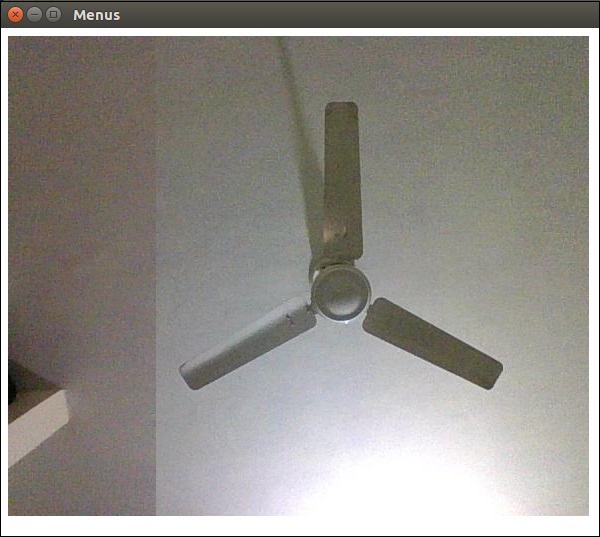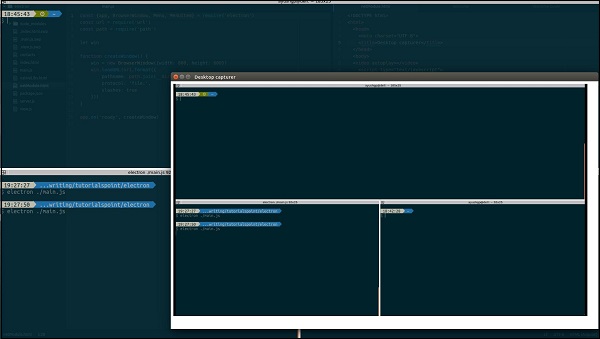Audio and video capturing are important characterstics if you're
building apps for screen sharing, voice memos, etc. They're also useful
if you require an application to capture the profile picture.
We'll be using the getUserMedia HTML5 API for capturing audio and video streams with electron. Lets first set up our main process in the main.js file as follows:
 You now have the stream from both your webcam and your microphone!
You could send this stream over the network for your purposes or save
this in a format you like.
You now have the stream from both your webcam and your microphone!
You could send this stream over the network for your purposes or save
this in a format you like.
Have a look at the MDN Documentation for capturing images to get the images from your webcam and store them.
This was done using the HTML5 getUserMedia API. You can also capture the user desktop using the desktopCapturer module that comes with electron. Lets see an example of how to get the screen stream.
Use the same main.js file as above and edit the index.html file to have the following content:
 You can refer to this StackOverflow question for a more in depth understanding of the usage.
You can refer to this StackOverflow question for a more in depth understanding of the usage.
We'll be using the getUserMedia HTML5 API for capturing audio and video streams with electron. Lets first set up our main process in the main.js file as follows:
const {app, BrowserWindow} = require('electron') const url = require('url') const path = require('path') let win // Set the path where recordings will be saved app.setPath("userData", __dirname + "/saved_recordings") function createWindow() { win = new BrowserWindow({width: 800, height: 600}) win.loadURL(url.format({ pathname: path.join(__dirname, 'index.html'), protocol: 'file:', slashes: true })) } app.on('ready', createWindow)Now that we've setup our main process, lets create the HTML file that'll be capturing this content. Create a file called index.html with the following content:
<!DOCTYPE html> <html> <head> <meta charset="UTF-8"> <title>Audio and Video</title> </head> <body> <video autoplay></video> <script type="text/javascript"> function errorCallback(e) { console.log('Error', e) } navigator.getUserMedia({video: true, audio: true}, (localMediaStream) => { var video = document.querySelector('video') video.src = window.URL.createObjectURL(localMediaStream) video.onloadedmetadata = (e) => { // Ready to go. Do some stuff. }; }, errorCallback) </script> </body> </html>You should get the output:
 You now have the stream from both your webcam and your microphone!
You could send this stream over the network for your purposes or save
this in a format you like.
You now have the stream from both your webcam and your microphone!
You could send this stream over the network for your purposes or save
this in a format you like. Have a look at the MDN Documentation for capturing images to get the images from your webcam and store them.
This was done using the HTML5 getUserMedia API. You can also capture the user desktop using the desktopCapturer module that comes with electron. Lets see an example of how to get the screen stream.
Use the same main.js file as above and edit the index.html file to have the following content:
desktopCapturer.getSources({types: ['window', 'screen']}, (error, sources) => { if (error) throw error for (let i = 0; i < sources.length; ++i) { if (sources[i].name === 'Your Window Name here!') { navigator.webkitGetUserMedia({ audio: false, video: { mandatory: { chromeMediaSource: 'desktop', chromeMediaSourceId: sources[i].id, minWidth: 1280, maxWidth: 1280, minHeight: 720, maxHeight: 720 } } }, handleStream, handleError) return } } }) function handleStream (stream) { document.querySelector('video').src = URL.createObjectURL(stream) } function handleError (e) { console.log(e) }We've used the desktopCapturer module to get the information about each open window. Now you can capture the events of a specific application or of the entire screen depending on the name you pass to the above if statement. This will be only streaming the things hapenning on that screen to your app.
 You can refer to this StackOverflow question for a more in depth understanding of the usage.
You can refer to this StackOverflow question for a more in depth understanding of the usage. 
No comments:
Post a Comment